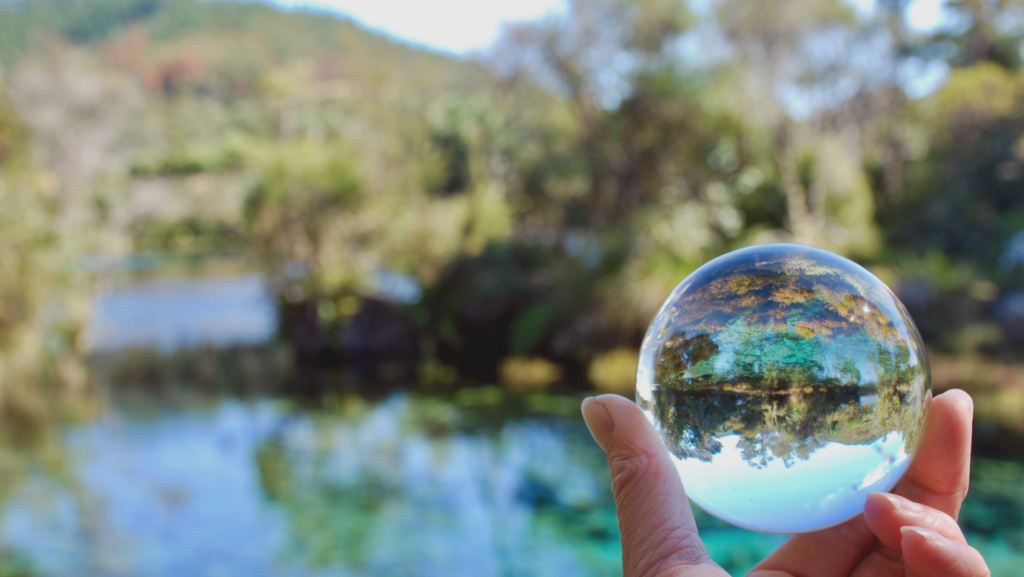Clean water is essential for life, so I’m glad you are searching for answers on how to purify Water. I did my research as well and listed 6 ways to purify water. You can easily do them, when there is no electricity, like in a big outage or if you are outdoor and just have moldy water from the river.
Having clean water is necessary for survival, which is why I appreciate your efforts in finding methods to purify water. I have also conducted some research and have compiled six techniques for purifying water. These methods can be easily carried out in situations where there is no access to electricity, such as during a power outage, or when you are outdoors with only contaminated water from a river.
Rule no. 1 : Under no circumstances should you consume water from a natural source without purifying it first, even if the water appears to be clear.
Now here is how to purify water:
#1 – Filtration
There are numerous water filtration systems available that effectively eliminate living microorganisms from water that has been contaminated.
Regarding water filtration, it is important to note that it is relatively costly compared to alternative methods. Nevertheless, it effectively accomplishes its purpose and ensures reliable water quality.
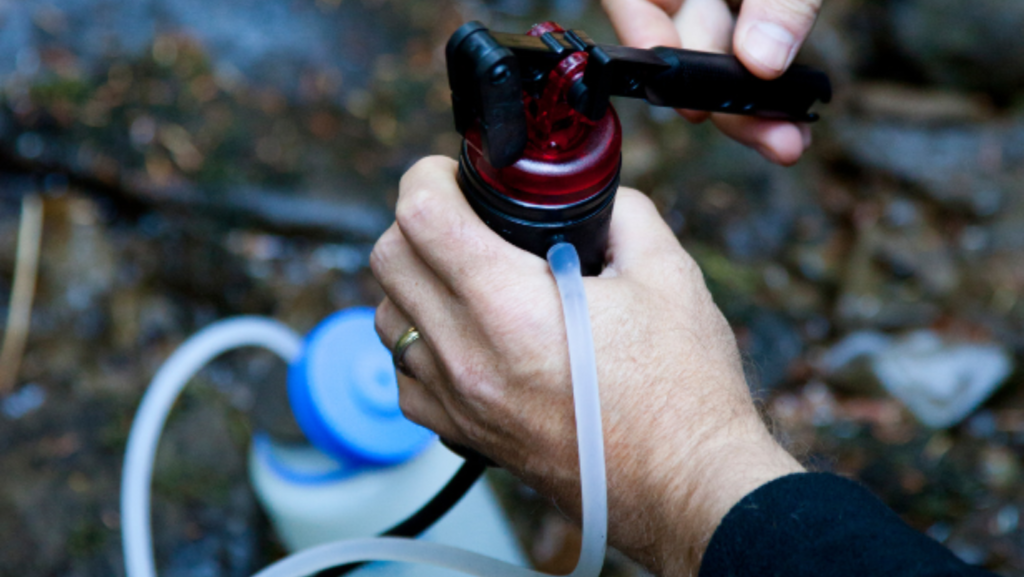
Witness the Pump Water Filter in operation right before your eyes!
These are the commons and easiest ways:
- Pre-Filtration
- Basic filtration can remove small particles and organic matter such as leaves and algae.
- You have the option to utilize either pantyhose, a bandana, or even a towel.
- This water treatment process is more efficient and ensures that the water filter will last longer.
- Gravity Water Filter
- “The bag labeled as ‘Dirty Water’ is positioned above the bag labeled as ‘Clean’. The force of gravity facilitates the movement of water, allowing it to pass through a filter placed within the system.”
- Clean water is saved in the reservoir.
- It is beneficial if you need to provide clear water for a group of people as it can purify a volume of 2 to 4 liters of water at once.
- Pump Water Filter
- A pump mechanism is used to filter water directly from its source, such as muddy puddles, seeps, and rivers.
- When it comes to various brands, Katadyn consistently stands out as an excellent selection.
- The Sawyer Squeeze Water Filtration System
- Once you have gathered water from a specific source, you can either filter it by squeezing it through a bag system into your water bottle or drink it straight from the source.
- Easy to use.
#2 – Boiling
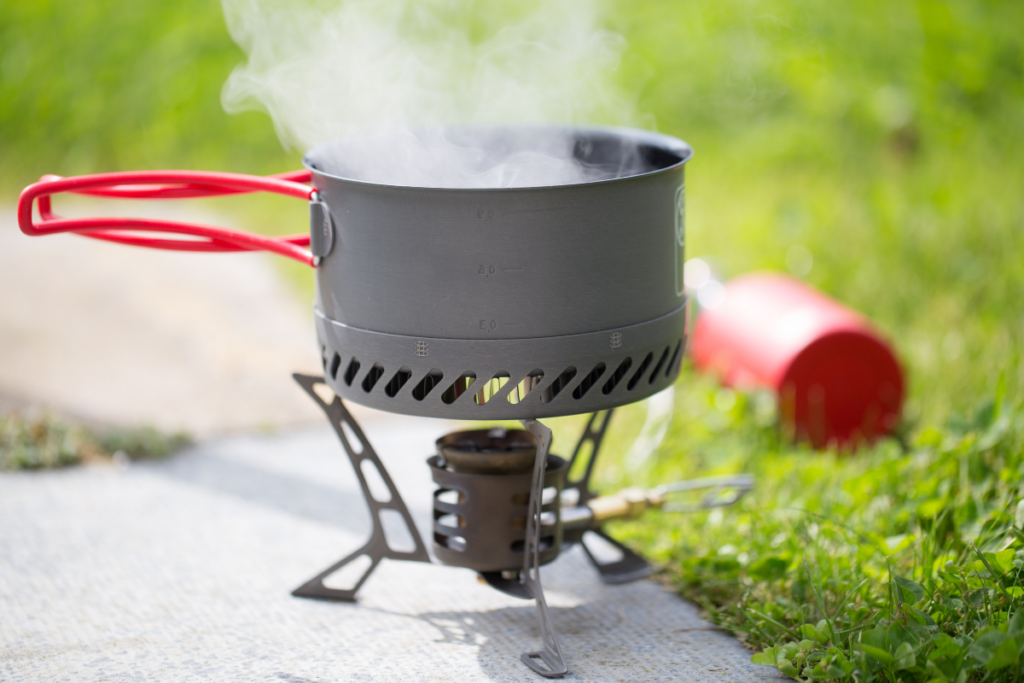
You can utilize a gas stove outdoors to heat your water until it reaches boiling temperature.
Water begins to boil at a temperatur of 100°C/212°F. At this temperature almost all germs get killed. By bringing water to a boil, you are safe with killing bacteria without checking the temperature.
Lower temperatures at 65°C/149°F and above can also stop growth and kill germs, but you will need a longer heating time and need to check with a thermostat.
How it works
- Heat the clean water until it is boiling vigorously for a minimum of 1 minute.
- If you are at an altitude higher than 6,500 feet, it is recommended to boil water for a duration of 3 minutes. [ 1 ]
- Let the water cool down.
- Keep the cooled water in containers that are clean and have been sanitized.
What’s needed
- Heat source → stove, fire, etc.
- Heatable container like a pot.
- A receptacle designed for cooling and storing boiled water.
Effects
- Kills disease-causing organisms
- Viruses
- Bacteria
- Parasites
- Watch out! Substances that came into contact with the water will not be eliminated.
- Water that has been heated maintains its mineral content and does not pose any risk to one’s well-being.
#3 – Distillation
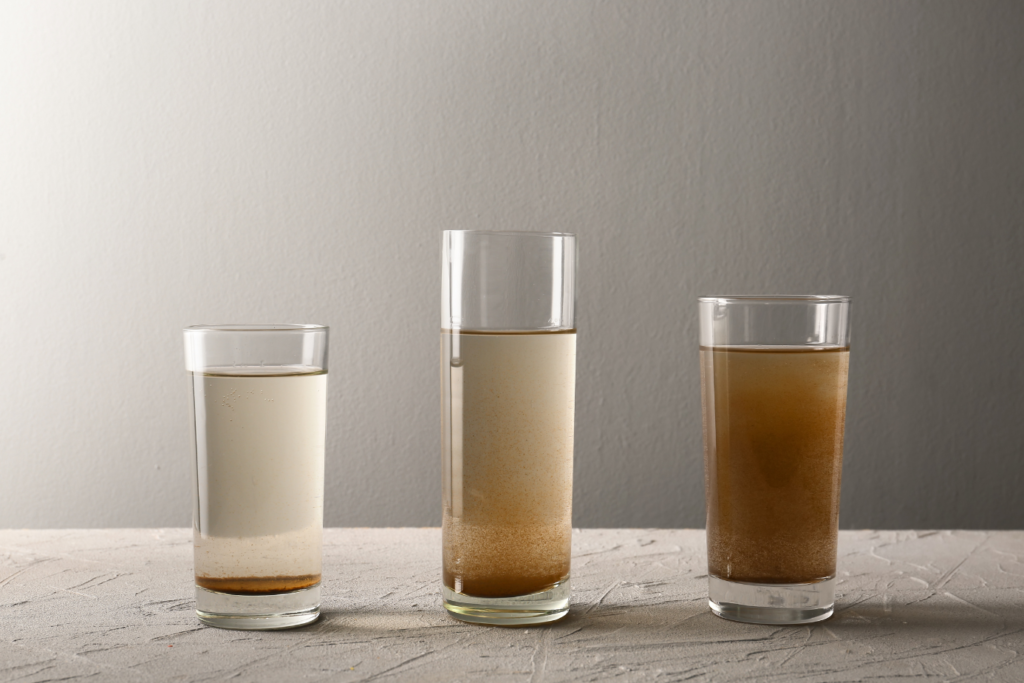
Contaminated water of this nature can be destilled as effective method to sanitize the water and render it suitable for consumption.
How it Works
This is a simple technique that can be easily carried out independently using basic materials.
Distillation can be used as a method for extracting fresh water from salty, contaminated, or slightly salty water.
- To bring water to a boil, use a pot that is halfway filled with water and place an inverted lid on top.
- Place a glass bowl inside the jar.
- Use a glass bowl placed inside the pot to collect the steam that is being released.
- If the pot’s lid cools down, the steam will transform into water droplets and collect inside the glass bowl below.
- The catched water is distilled.
- Look here for a video instruction .
What’s needed
- A pot made of stainless steel containing water filled halfway.
- To ensure that the glass bowl floats, it should be the appropriate size for the pot and not come into contact with the bottom.
- Heat source for boiling the water.
- A fully closing lid for the heated pot.
- Cooling methods such as ice or chilled stones can be used to lower the temperature of the lid and reduce steam produced by boiling water.
Effects
- The safest option when dealing with hazardous water, such as contaminated with radioactivity or chemicals.
- WARNING For a long-term solution it’s unhealthy and can cause deadly health effects by dehydration. But when you’re not getting enough electrolytes through your diet, it’s better you use distilled water for drinking as an emergency solution. [ 2 ]
#4 – Disinfection with Chlorine
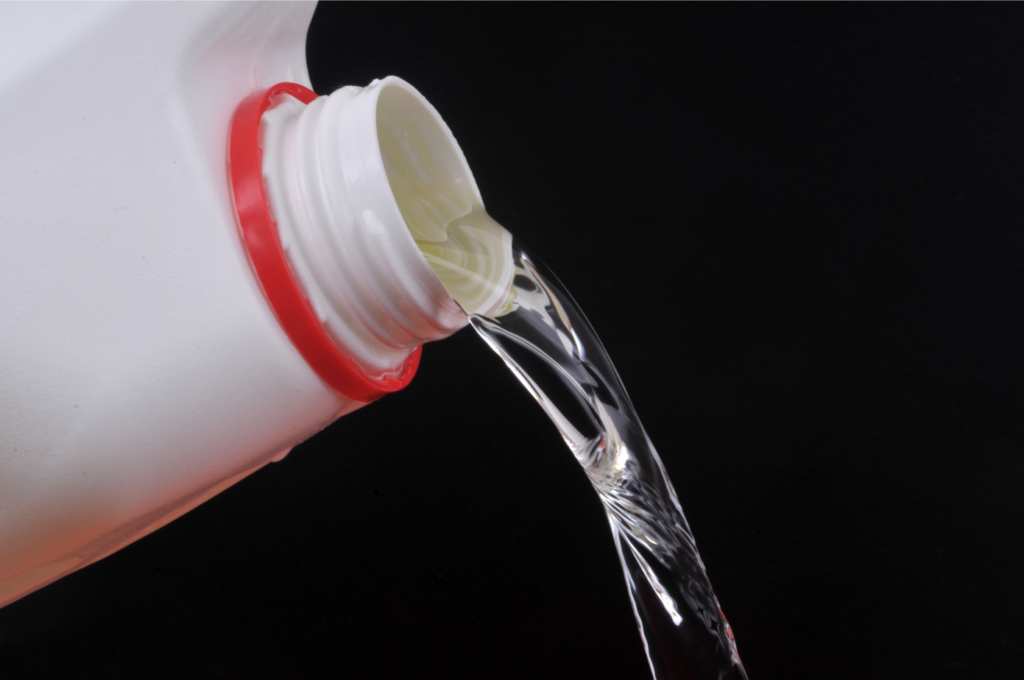
Ensure that you solely use bleach, excluding any additional substances such as dyes or cleaning agents.
How it works
- It is important to exercise caution and protect yourself by wearing gloves and safety goggles when handling chlorine due to its toxicity to humans. However, once the process is complete, chlorine no longer poses a threat to health. [3]
- Mix 16 drops or ¼ teaspoon of chlorine/household bleach per gallon of water.
- Stir and let stand for 30 minutes.
- If there is a slight chlorine smell and the water looks clear, it’s safe to drink.
- Lasts up to a few days.
- It is still necessary to filter the cloudy water beforehand.
What’s needed
- Container to mix
- In order to ensure your safety, it is important to wear personal protective equipment.
- ONLY USE:
- Unscented household bleach, for example, Clorox or Purex (5,25%-8,25 sodium hyppchlorid)
- Purifying tablets (contains iodine, chlorine, or chlorine dioxide)
- Tablets for purification, which include iodine, chlorine, or chlorine dioxide.
- Read the instructions before using.
- WARNING : Do NOT To ensure the safety of your colors, it is recommended to use bleach that is specifically labeled as color-safe or contains additional cleaning agents.
Effects
- Eliminates various types of microorganisms such as parasites, viruses, and bacteria. [4]
- Does not eliminate any harmful chemicals or toxins.
- The taste and smell of untreated water vary from that of treated water.
#5 – SODIS = Solar Water Disinfection
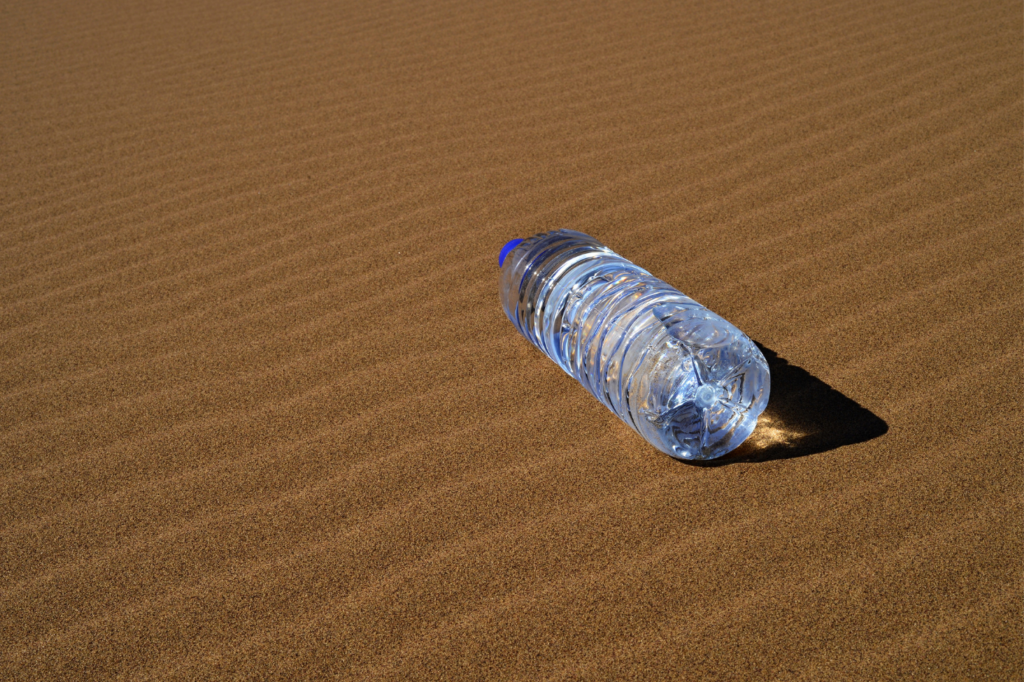
SODIS is a widely used method for purifying water in less developed nations.
How it works
- The sun’s energy can effectively disinfect water with low levels of cloudiness.
- Take a clear plastic bottle and fill it with three-fourths (75%) of its capacity with water. Shake the bottle vigorously for a duration of 20 seconds to ensure sufficient oxygenation. Finally, top off the bottle by filling it up completely with more water.
- Now, position it in a horizontal orientation at a location that receives ample sunlight, such as on top of a rack or rooftop.
- The duration varies based on the weather conditions. On a sunny day, it could last for approximately 6 hours when exposed to direct sunlight, whereas on cloudy days, it may take up to 2 days to complete.
- Following the treatment, harmful microorganisms such as viruses, bacteria, and protozoa become dormant, rendering the water suitable for consumption. [ 5 ]
WAPI = Water Pasteurization Indicator
This is a small an closed tube which is filled with soy wax. The indicator is placed inside the waterbottle. The wax melts at 65°C/149°F. Thats means, the water is at the point to be pasteurized with its temperature.
What’s needed
- Clear plastic bottles available in sizes ranging from 0.3-2.0l/10-64 oz.
- Clear or low-turbidity water
- Sunny place outside
Benefits
- This water purification method is cost-effective and easy to perform.
- Proven reduction of microorganisms.
- No chemical residual.
Drawbacks
- Pre-filtering is necessary in order for SODIS to be effective as it is unable to purify cloudy water.
- The quantity of solar-treated water you receive is determined by the amount of sunlight in your region and is constrained by the number of bottles available, so it requires a patient wait.
#6 – UV Light Water Purifier
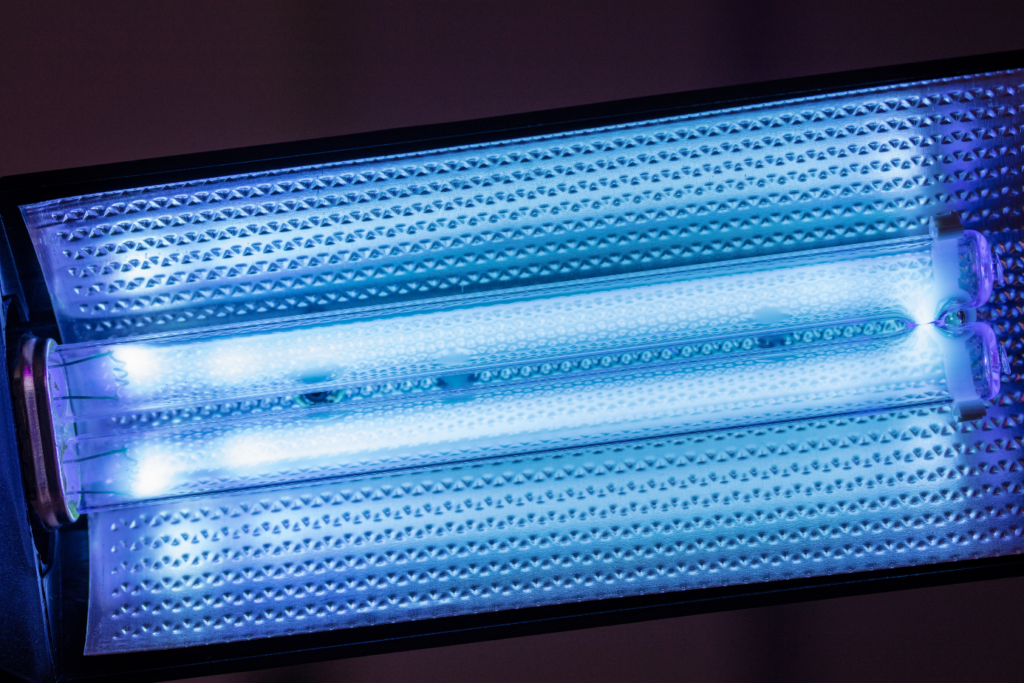
How it works
- UV-C Light is employed to deactivate airborne pathogens and microorganisms, such as bacteria and viruses.
- This method is secure, as it eliminates 99.99% of organisms in the water without the use of chemicals. Additionally, every single drop of water that undergoes purification with a UV light purifier is thoroughly cleaned. You are leaving no wastewater behind. [ 6 ]
- In order to effectively clean your water using UV-Light, it is essential to employ a fine pre-filter to ensure optimum clarity beforehand.
- The more convenient option would be to utilize a UV-Light-Steripen. They occupy minimal pocket space, effortlessly fit in a bottle, and are secure for utilization.
Benefits
- A secure method for purifying water, eliminating bacteria, protozoans, and viruses.
- No change in taste or form
- No wasted water
Drawbacks
- In order to utilize Clearwater for treatment purposes, it is imperative to perform pre-filtration as ultraviolet (UV) treatment is only effective in deactivating living organisms.
- Electricity or sufficient batteries are necessary in order to have power during a blackout.
What Now?
There are different methods for filtering water, such as using natural minerals as a means of purification. Shungite is used to purify water. Exploring filtration as a method is worthwhile, as it guarantees consistent water quality despite its expense.
You now have the opportunity to personally try out these methods and gather the necessary items in advance. Make sure to adhere to the instructions and enjoy the process!
Want to know if water can spoil? Check out this article!
